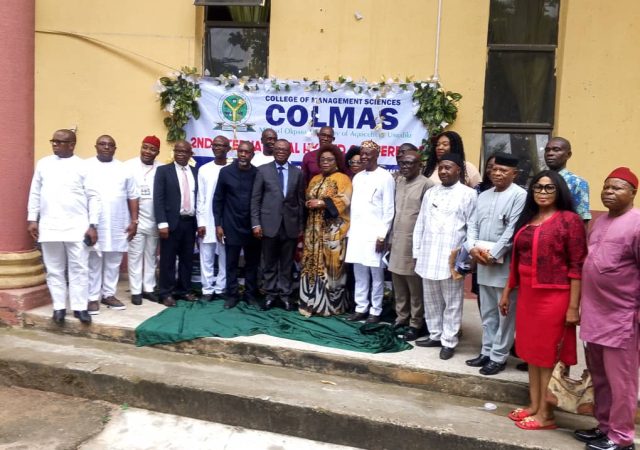
By Thomas Ashaolu
Without doubt, intellectual property (IP) rights by way of patents, copyrights, trade secrets, industrial designs and trademarks among others, have taken over the centre stage in modern businesses. They not only provide bedrock for many productive endeavours, but have increasingly become acknowledged as the motivation for creativity and innovation, as well as the drivers of business competitiveness, profitability and growth.
Indeed, it is no gainsaying that ownership of such rights constitutes assets easily satisfying the three criteria for monetary value – relative scarcity, utility and transferability. Therefore, though IP is actually intangible, it is a proprietary right and one capable of attracting true monetary value. Contemporary decisions on business financing, negotiations on merger deals and various transactions would therefore be normally anchored on adequate appreciation of the underlying IP assets, thereby making it necessary that various stakeholders in a business are privy to the worth of these assets. Unfortunately, the process of ascertaining such figures of value or worth is far from simple.
Nevertheless, being a property asset, determining the value of IP can be made explicit, contrary to dreaded conception. However, the exercise has to be handled professionally by those with appropriate expertise in property analysis. Thus, it is not enough for one to be an IP attorney, IP manager, agent or to be a specialist in various aspects of patents, trademarks, licensing etc. Transformation of inventions, designs and creative works into proprietary rights meant entry into the context of ‘property’ thereby exhibiting common nature. ‘Property’, ‘value’ and ‘valuation’ are concepts with foundational underpinning that require proper understanding and interpretation.
Property asset can be real, personal or intrinsic. In determining their worth, personal properties or chattels (like vehicles, machinery, furniture and jewelry) are apparently, the easiest due to their outlying position on the property circle. Nevertheless, true value assessment is predicated on reliable analysis of all value-influencing variables (chiefly item-specific and market-related), whereby specialist input may still be necessitated here.
The next is real property in terms of rights over landed property. This is more rooted into property theory with value-drivers being less neither obvious nor objective, compared to personal properties. Hence, real or landed property poses greater challenge for specialist handling of its valuation. Usually, the valuer in the field is expected to be versed in real estate theory and marketing. At the core of property theory is the more intricate category better described as ‘Intrinsic property’ and here belongs IP assets.
Intrinsic properties are unique, not just for being intangible but also in their attachment to individuals, groups or firms while still retaining separable property-asset characteristics. They exhibit both the nature of real properties and chattels, but in an interwoven manner that tasks the valuer much more than for real property category. Thus, ideal IP valuer need not only be a qualified property valuer but one who in addition, has fair knowledge of the nature and workings of IP.
Another issue to be taken into cognizance is the relativity of the concept of value. Several variables may define different value figures for a property asset, including use-application, timing and scope of interest. Thus, the same IP asset may carry different value figures at the same time for different purposes or looking at different perspectives thereof, while these value figures may also vary with time or changing circumstances.
In fact, value-influencing variables are dynamic and it takes a versatile and experienced valuer skilful in the tripartite nature of property assets to effectively ascertain proper value figure in each given situation. One would continue to feel uncomfortable with value statements for property assets until it is realized there is no such thing as ‘the right figure’ in this turf.
However, it also behooves on the property valuer to explicitly define the type of value he has sought, the framework of facts and circumstances (including possible limiting conditions) within which his value figure has been arrived at for users to be effectively guided. Most value figures represent estimate of unexhausted utility of asset for defined purpose at a given point in time. The field of valuation of property assets is far from being an all-comers’ type. Just like knowledge of law of commerce cannot translate to a business graduate expecting to succeed as court counsel in a matter involving business dispute though his knowledge in commercial law would often, make his submission to the legal practitioner effective for case drafting.
Finally, valuation is a field that is easily misunderstood. There are variants of interrelated concepts erroneously interpreted to be interchangeable; such as calculation, assessment, evaluation and valuation. In this context therefore, we must remember to qualify the task at hand as ‘property valuation’. Desktop analysis of documents on expenditures and receipts by accountants using predetermined benchmarks (including that concerning measurement of depreciation) cannot amount to determining property value in the real sense thereof. Yes, such would constitute calculation at a professional level. But, the lexicon is well settled that a business or company can be so valued, contextually.
However, the ensuing figures for each of the constituent property assets would not be tenable as their respective values in exchange. Not even pricing or price analysis can suffice as valuation activity. Professionalism rests on existence of specialized skill for solving existing problem. Thus, professional property valuation would not be sought for the share of a quoted company where one is easily privy to stock market reports, nor for branded items where price evidences abound.
The ‘determination’ in valuation task requires some elements of research or investigation beyond the surface, against sheer sorting of figures or calculations. Assessment and evaluation are themselves analytical exercises aimed at gauging something against predetermined benchmark or within a given framework. They often constitute steps along actual valuation process. An engineer or operator may be required to assess or evaluate a machine against its design and expected operational parameters with his report serving as variable input to monetary valuation, and the application of such assessment or evaluation report would itself, be significantly influenced by the type of value to be determined and the intended purpose of that valuation.
It is worth mentioning that valuation in the realm of property assets have three dimensions to it – defining the appropriate concept of value that matches the task at hand and the circumstances thereof, ascertaining proper method(s) and procedure that can deliver effective result and comprehending the value-influencing characteristics of the property itself.
Conclusively therefore, the panacea to unsettling the IP valuation enigma include prima facie, involving the right professional and supplying him with all information and data relevant for the exercise.
Dr. Ashaolu has well over three decades of experience as a Lagos-based specialist Property Valuer, academic and author with special interest in IP
bioashaolu@gmail.com, taashaolu@hotmail.com










